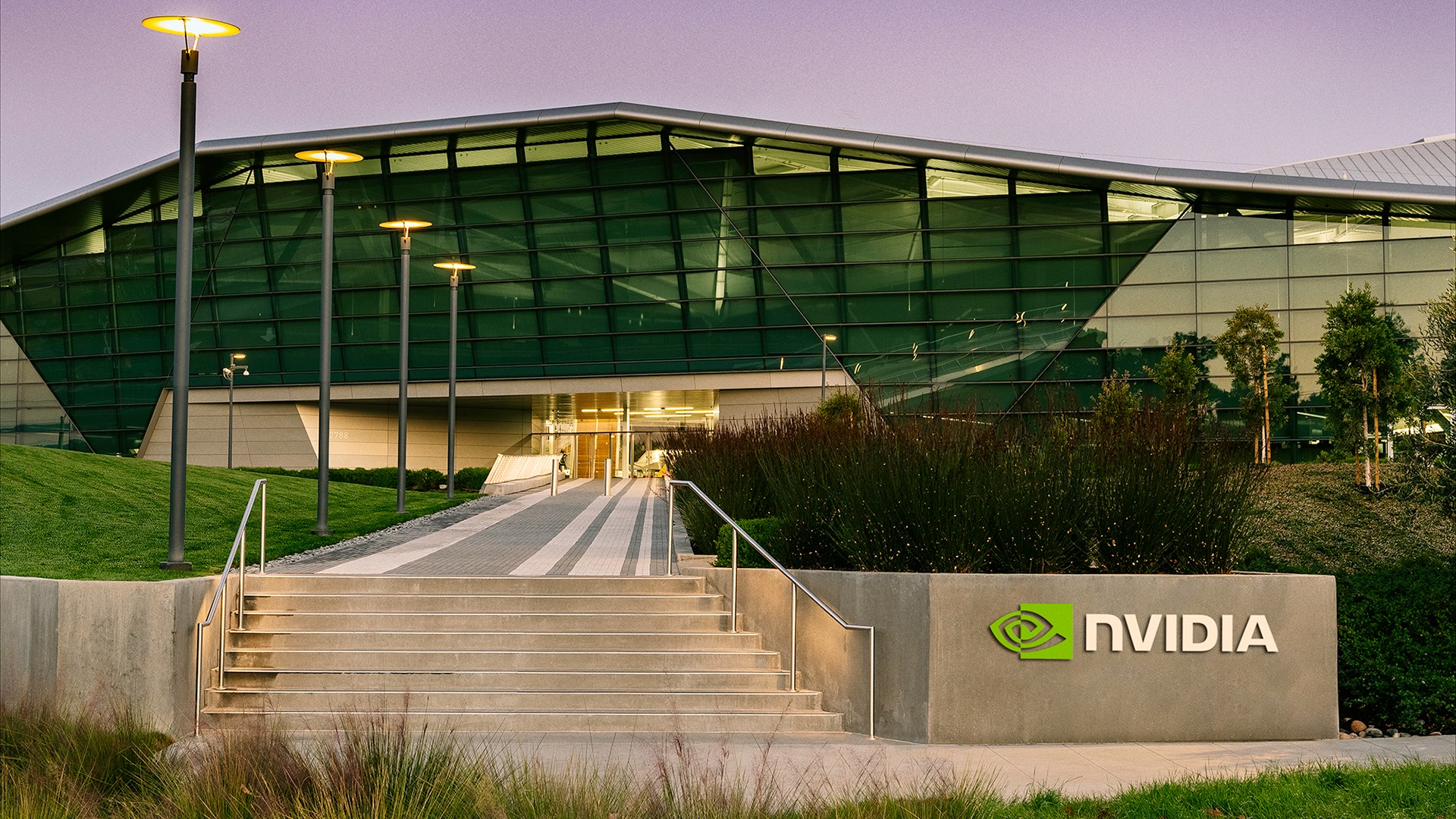Supreme Court shuts down Nvidia appeal — cryptomining class action suit will proceed
Nvidia's legal battles continue to grow.

The U.S. Supreme Court has dismissed an appeal from Nvidia, rejecting its request to shut down a class-action lawsuit that began in 2018. The suit, based on cryptocurrency mining, involves accusations that the company misled its shareholders.
The Supreme Court first heard arguments from Nvidia's attorneys in November and issued a one-sentence dismissal today, declaring that Nvidia's request for Supreme Court intervention is "dismissed as improvidently granted."
The suit against Nvidia was brought by Swedish firm E. Ohman J:or Fonder AB, arguing that Nvidia failed to accurately represent to shareholders how much of its business and sales in and around 2018 were built on sales to cryptocurrency miners. The investors of Nvidia wanted to know more about the nascent field of cryptomining, but were purposefully kept in the dark regarding the topic, the suit alleges.
The suit alleges this lack of information on cryptocurrency mining in Nvidia's SEC filings violated the Securities Exchange Act of 1934, which is the act that created the SEC and litigates what statements corporations must make to the government and its shareholders. Nvidia already paid a $5.5 million fine to the SEC in 2022 for failing to disclose the effect cryptocurrency had on its gaming business in 2018 and 2019, without admitting or denying the SEC's statement.
The class-action against Nvidia was dismissed by a California judge in 2021, but was revived shortly after by the 9th U.S. Circuit Court of Appeals in San Francisco. Nvidia then went to the Supreme Court to request that it uphold the original judge's dismissal of the suit, arguing that the decision to allow the lawsuit to continue had national consequences: "creat[ing] an easy road map for plaintiffs to evade the Reform Act." The Private Securities Litigation Reform Act provides safeguards against frivolous lawsuits.
The Supreme Court disagreed with this lofty claim. Justice Sonia Sotomayer instead called Nvidia's petition "concerning."
"We often don't grant cert to error correct," said Sotomayer. "I'm not actually sure what rule we could articulate that would be clearer than our cases already say."
As Supreme Court cases set national legal precedence, a class-action suit against Nvidia was deemed too narrow for the Court to take it up.
The case against Nvidia will now return to the 9th Circuit Court. Nvidia's status as the world's largest company and its reliance on the cryptocurrency and AI markets to reach that height means that Nvidia is constantly embroiled in legal troubles. Yesterday, China's State Administration for Market Regulation launched an antitrust suit against Nvidia which could result in fines of up to $1.03 billion, based on Nvidia breaking promises to Beijing after it acquired Mellanox in 2020.
Get Tom's Hardware's best news and in-depth reviews, straight to your inbox.

Sunny Grimm is a contributing writer for Tom's Hardware. He has been building and breaking computers since 2017, serving as the resident youngster at Tom's. From APUs to RGB, Sunny has a handle on all the latest tech news.
-
Pierce2623 Nvidia had no accurate info to say how many of its GPUs were bought for crypto mining when they bought up all the gaming GPUs. It’s a stupid request in the first place and I don’t even like Nvidia.Reply -
DougMcC Reply
The wording seems to suggest that Nvidia had such information, and made a choice to withhold it. That's a very different situation legally from just not having the information.Pierce2623 said:Nvidia had no accurate info to say how many of its GPUs were bought for crypto mining when they bought up all the gaming GPUs. It’s a stupid request in the first place and I don’t even like Nvidia. -
UnforcedERROR Reply
I'd argue that they could fairly approximate their increase in revenue relative to previous iterations of their products. The crypto miners weren't terribly subtle in their purchases, and NVidia openly obliged. There's a reason GPU scarcity was crazy for a while, because plenty of these operations bought directly from NVidia. They absolutely have those numbers. Can they put an exact number on things? No, but they can certainly guess.Pierce2623 said:Nvidia had no accurate info to say how many of its GPUs were bought for crypto mining when they bought up all the gaming GPUs. It’s a stupid request in the first place and I don’t even like Nvidia. -
dk382 Maybe they couldn't have had exact estimates, but there was plenty of data they could have used to approximate in broad terms that crypto mining was tilting the scales. Let's face it, everyone who was tuned into the PC hardware scene at the time knew it. This wasn't a case where we only saw in hindsight how crypto mining tilted the market, we all knew at the time too. We could see the massive increase in mining activity on the blockchain, we could also see loads of new mining operations starting up with gaming GPUs. The miners weren't hiding it, they were posting pictures of their massive operations for everyone to see. And I'm sure Nvidia had better data than we did. So Nvidia avoiding mentioning any of this to their shareholders when presenting them with rising "gaming" revenue was very suspect indeed.Reply -
Math Geek we're not talking about some guy with 10 gpu's in his garage. hundreds of thousands of gpu's bought directly from nvidia from a single entity for mining is something they def knew about and could easily quantify in their filings. the scarcity was not from the small scale operations but those running literally 100,000 + at a time (and some we saw reports on that were over 500k in a single operation).Reply
yah nvidia def knew how much of the cards were going to miners or at least a VERY VERY good idea ..... -
hotaru251 Reply
accurate? perhaps not that much however they did know a lot of it.Pierce2623 said:Nvidia had no accurate info to say how many of its GPUs were bought for crypto mining
There was GPU shortage and they were direct selling pallets of GPU to people and not actual vendors. -
das_stig Surely with all the AI processing power NV can manufacturer, they could have mined that data and still have change left over for the lawyer's bar bill after paying t for the electricity. :unsure:Reply -
Pierce2623 Reply
Oh they could definitely approximate it and I’m sure they did. Maybe they outright lied in their numbers.hotaru251 said:accurate? perhaps not that much however they did know a lot of it.
There was GPU shortage and they were direct selling pallets of GPU to people and not actual vendors. -
spongiemaster Reply
This lawsuit is based on the 2017 bitcoin bubble that lasted less than 6 months. The effects on GPU availability were very brief and there was no public evidence that Nvidia was selling pallets to anyone. AMD's GPU's were superior to Nvidia's for bitcoin mining and were more coveted. What all you people are describing was the more recent ethereum bubble that started at the launch of Ampere in 2020.hotaru251 said:accurate? perhaps not that much however they did know a lot of it.
There was GPU shortage and they were direct selling pallets of GPU to people and not actual vendors.
This lawsuit is largely based around the guesstimate of a respected financial analyst that did a bunch of guesstimations and by their own admission stated there was no way to nail down the numbers. Nvidia likely did understate the impact of crypto on their bottom line, but good luck proving that in addition to what degree they did.